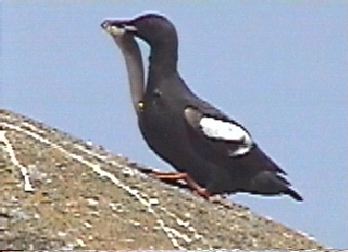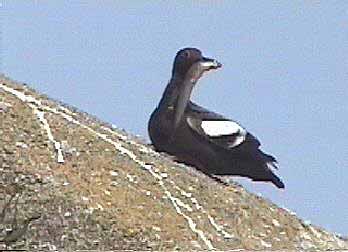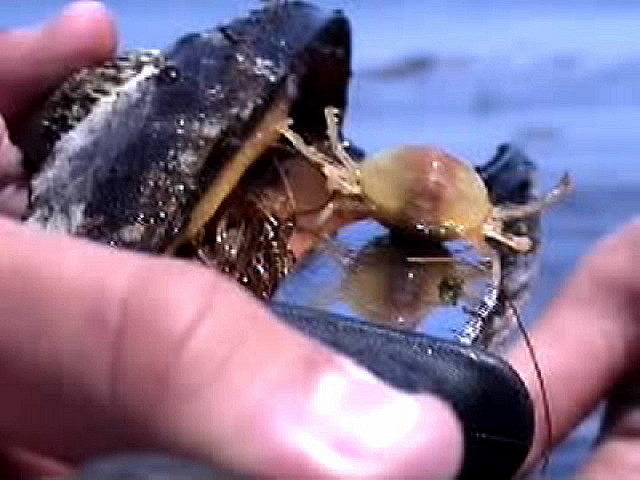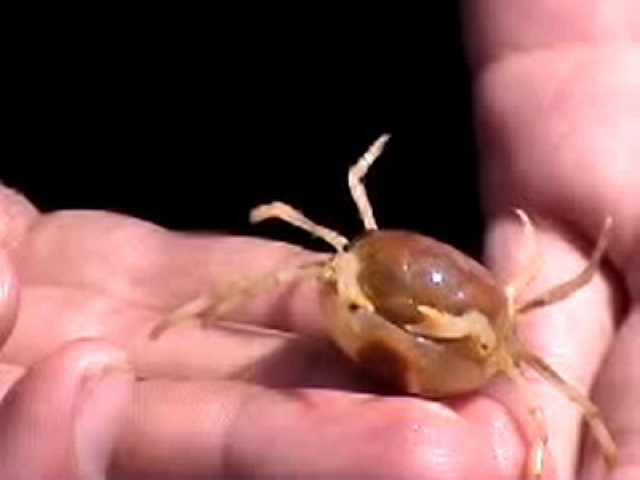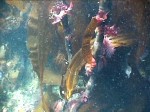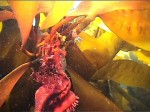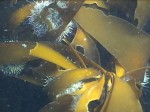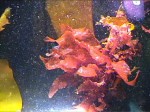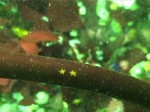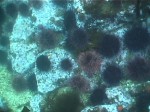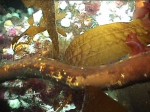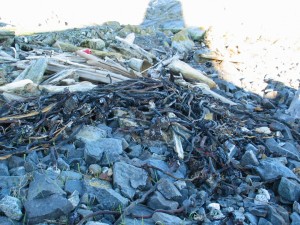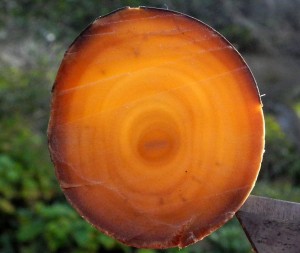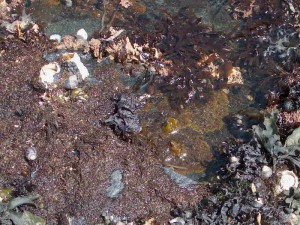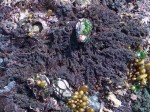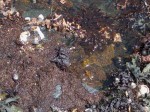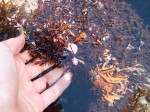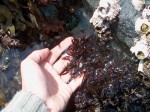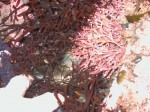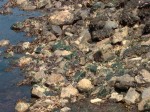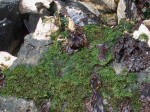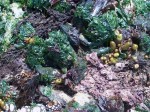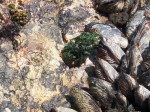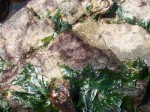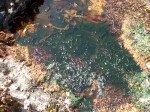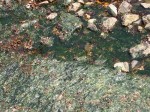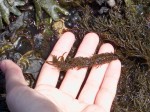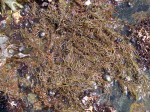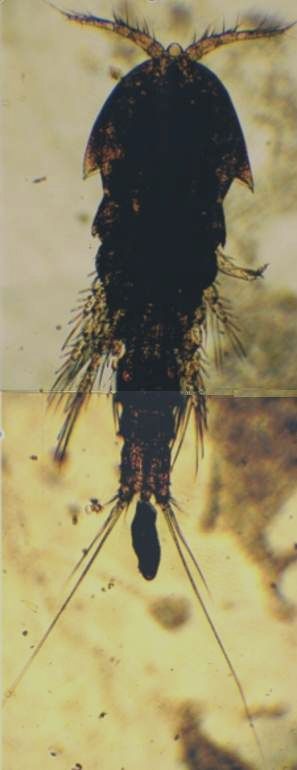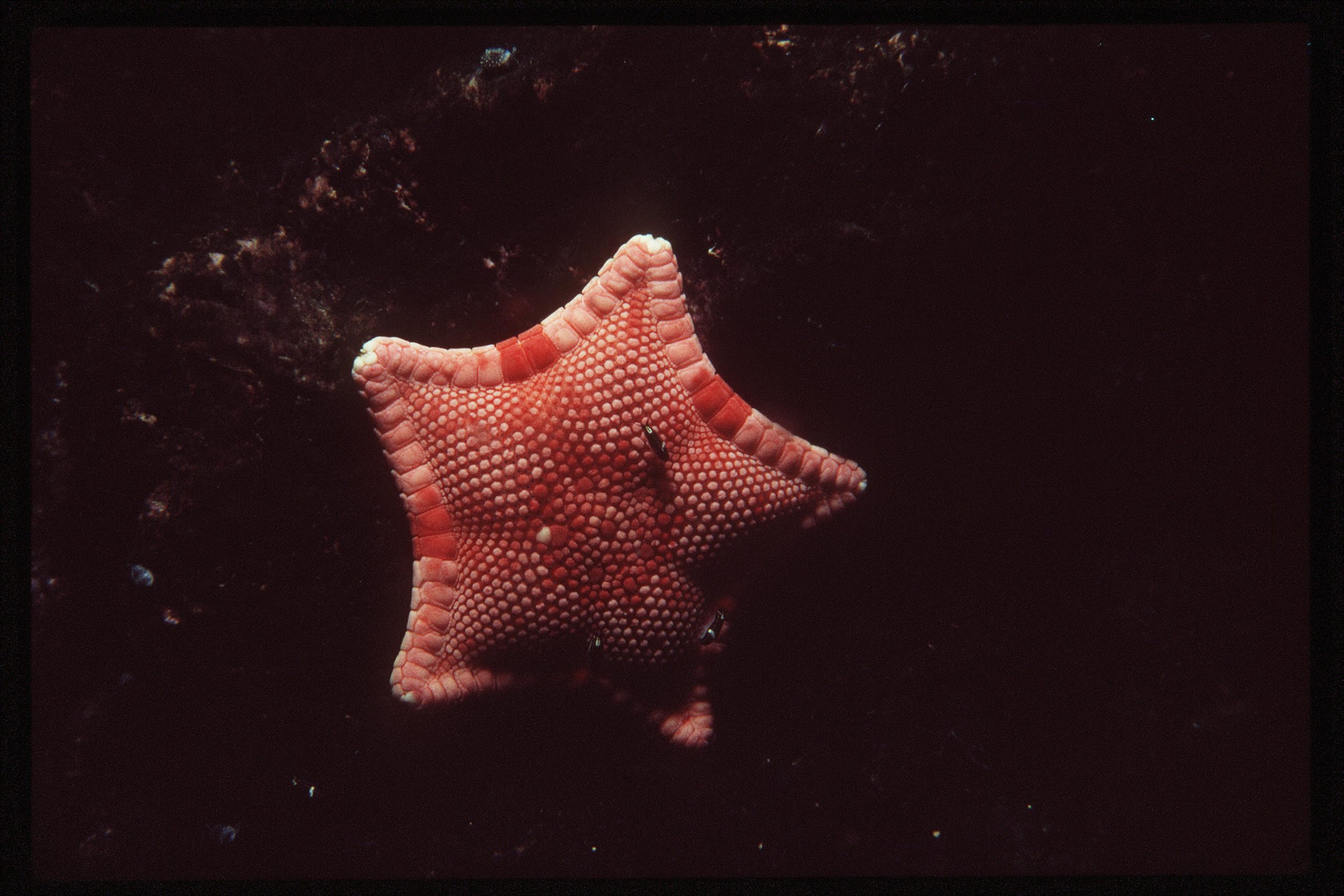These images were taken on the remote camera 5 shows a Pigeon Guillemot prior to feeding a Penpoint gunnel to chicks.During the months of May and June, the Pigeon Guillemots (Cepphus columba) are constantly diving off the north side of Great Race Rock and bringing up penpoint gunnels for their young. They nest under loose rock on several locations arounf the island. They are very cautious about going to their nest burrow where they may be seen by predators,
PUGET SOUND/ Strait of Juan de Fuca SPECIES
Apodichthys flavidus Penpoint Gunnel
Pholis clemensi Longfin Gunnel
Pholis laeta Crescent Gunnel
Pholis ornata Saddleback Gunnel
Pholis schultzi Red Gunnel
Xererpes fucorum Rockweed Gunnel
PENPOINT GUNNEL
This is a family of littoral fishes of the northern Pacific and northern Atlantic.They are typically found hiding under rocks and logs or in tidepools at low tide.The longest gunnel , at maximum of 46 cm,is the Penpoint Gunnel.Most gunnels feed on small crustaceans and molluscs.There are about 14 species, six are found here. Although secretive , this family is common in Puget Sound. This fish is not important commercially and is not considered threatened.This species can breath air when out of water.
PHYSICAL DESCRIPTION: Body elongate and compressed (eel-like body with no pelvic fins). Contains only flexible spines ,may have a dark streak that runs through the eye from top of head downward . Eye round, its diameter about one fifth the into length length of head. It may have small dark spots along the sides.Distance from snout to anal origin greater than half of body length.Maximum length is 1.5 feet.10 large melanophores along dorsal surface of gut and anus, melanophores can be also along postanal and dorsal near caudal region,ventral surface of gut has a row of small melanophores.Colour very variable depending upon diet as well as environment, from green through brown to red, the green colour from pigments dispersed through skin, the red in special pigment cells, the brown in combination (Hart 1973).Teeth are sharp,pointed, apparent in post-larvae.
Dorsal fin KC-XCIV (Miller and Lea 1972).
Anal fin I,36-42 (Miller and Lea 1972); I,38-42 (Hart 1973).
Pectoral fin 15-16 (Hart 1973).
Mouth Terminal,small,with thick lips (Hart 1973).
Verebrae 96-101 (Miller and Lea 1972)
DISTRIBUTION: Southern California to southeast Alaska and Kodiak Island.In British Columbia on both coasts of Vancouver Island, the Strait of Georgia .Common in Burrard Inlet in September.Queen Charlotte Islands (Hart 1973). In costal or bay water blending with vegetation such as Sargassum spp.,Ulva spp., and Zostera spp.,settling on the bottom at ca. mm TL (Wilkie 1966).Pelagic,along coastal waters and bays. Horseshoe Cove and vicinity of Portero Power Plant on San Francisco Bay,Marconi Cove of Tomales Bay.
REPRODUCTION: Spawing occurs from January to March.The egg mass is coiled around by one or both parents.The incubation period is about two and two a half months.Newly hatched larvae average about 13mm, and the body is transparent and positively phototactic (Wilkie 1966).The age of maturity of the penpoint gunnel has not be documented in the literature.Growth appears to be rapid during the first year from 20 to 40 milimeters in April and May to 100 to 120 millimeters by the end of summer.
REFERENCES: J.L.Hart- Pacific Fishes of Canada(1973),Wilkie (1966)
|
Other Members of the Class Actinopterygii at Race Rocks.
|
and Image File |
 The Race Rocks taxonomy is a collaborative venture originally started with the Biology and Environmental Systems students of Lester Pearson College UWC. It now also has contributions added by Faculty, Staff, Volunteers and Observers on the remote control webcams. The Race Rocks taxonomy is a collaborative venture originally started with the Biology and Environmental Systems students of Lester Pearson College UWC. It now also has contributions added by Faculty, Staff, Volunteers and Observers on the remote control webcams.
March 8 2003- Miroslav Lestanin |

